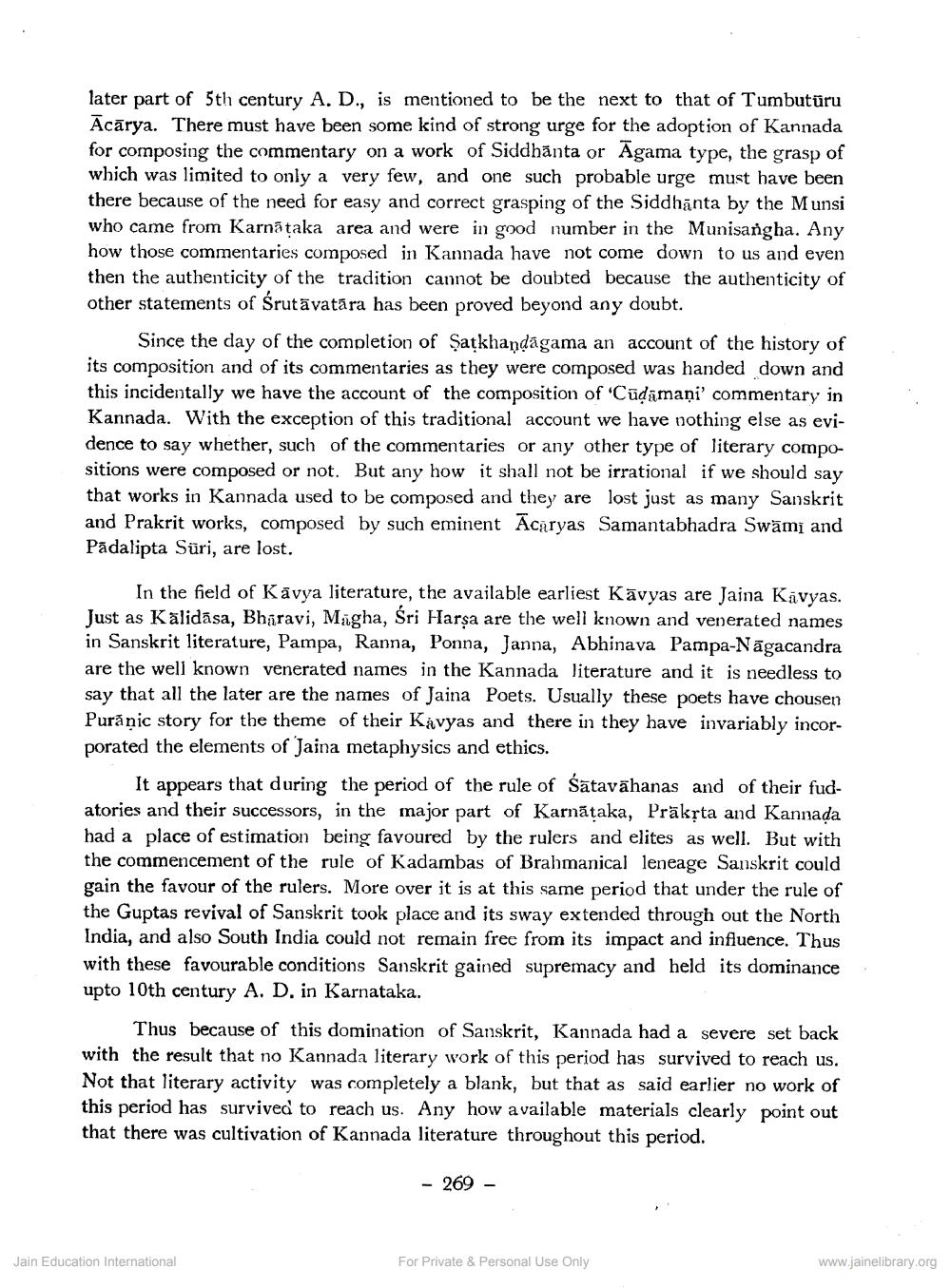Book Title: Kannada and Jainagam Sahitya Author(s): M D Vasantraj Publisher: Z_Kailashchandra_Shastri_Abhinandan_Granth_012048.pdf View full book textPage 2
________________ of Sidduch prophe sido later part of 5th century A. D., is mentioned to be the next to that of Tumbuturu Ācārya. There must have been some kind of strong urge for the adoption of Kannada for composing the commentary on a work of Siddhānta or Āgama type, the grasp of which was limited to only a very few, and one such probable urge must have been there because of the need for easy and correct grasping of the Siddhanta by the Munsi who came from Karnā taka area and were in good number in the Munisangha. Any how those commentaries composed in Kannada have not come down to us and even then the authenticity of the tradition cannot be doubted because the authenticity of other statements of Srutāvatāra has been proved beyond any doubt. Since the day of the completion of Satkhandagama an account of the history of its composition and of its commentaries as they were composed was handed down and this incidentally we have the account of the composition of "Cūdāmaņi' commentary in Kannada. With the exception of this traditional account we have nothing else as evidence to say whether, such of the commentaries or any other type of literary compositions were composed or not. But any how it shall not be irrational if we should say that works in Kannada used to be composed and they are lost just as many Sanskrit and Prakrit works, composed by such eminent Ācāryas Samantabhadra Swāmį and Pādalipta Sūri, are lost. In the field of Kavya literature, the available earliest Kävyas are Jaina Kavyas. Just as Kālidāsa, Bharavi, Magha, Sri Harsa are the well known and venerated names in Sanskrit literature, Pampa, Ranna, Ponna, Janna, Abhinava Pampa-Nāgacandra are the well known venerated names in the Kannada literature and it is needless to say that all the later are the names of Jaina Poets. Usually these poets have chousen Purăņic story for the theme of their Kavyas and there in they have invariably incorporated the elements of Jaina metaphysics and ethics. It appears that during the period of the rule of śātavāhanas and of their fudatories and their successors, in the major part of Karnataka, Präkşta and Kannada had a place of estimation being favoured by the rulers and elites as well. But with the commencement of the rule of Kadambas of Brahmanical leneage Sanskrit could gain the favour of the rulers. More over it is at this same period that under the rule of the Guptas revival of Sanskrit took place and its sway extended through out the North India, and also South India could not remain free from its impact and influence. Thus with these favourable conditions Sanskrit gained supremacy and held its dominance upto 10th century A. D. in Karnataka. Thus because of this domination of Sanskrit, Kannada had a severe set back with the result that no Kannada literary work of this period has survived to reach us. Not that literary activity was completely a blank, but that as said earlier no work of this period has survived to reach us. Any how available materials clearly point out that there was cultivation of Kannada literature throughout this period. - 269 - Jain Education International For Private & Personal Use Only www.jainelibrary.orgPage Navigation
1 2 3 4 5
